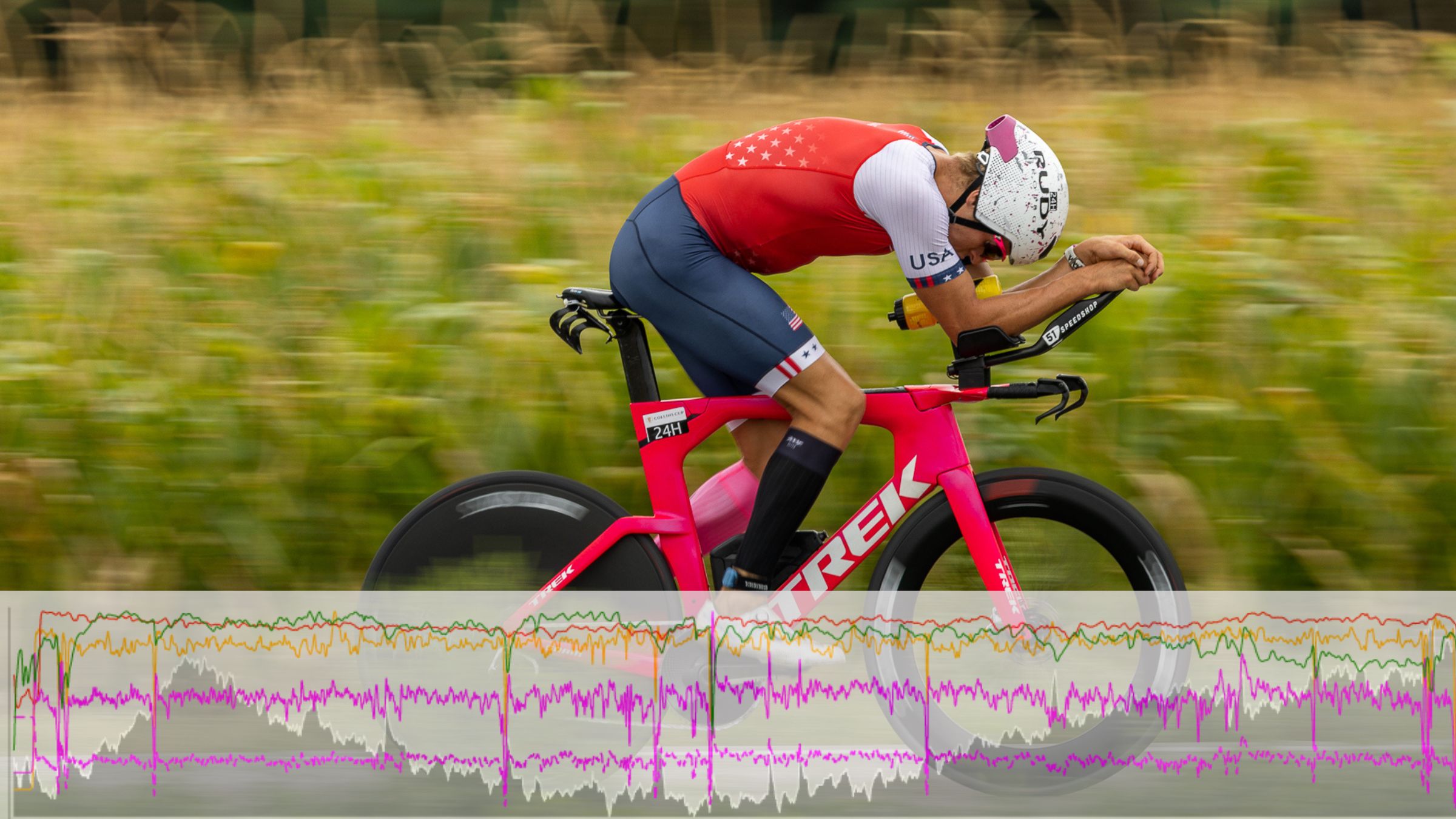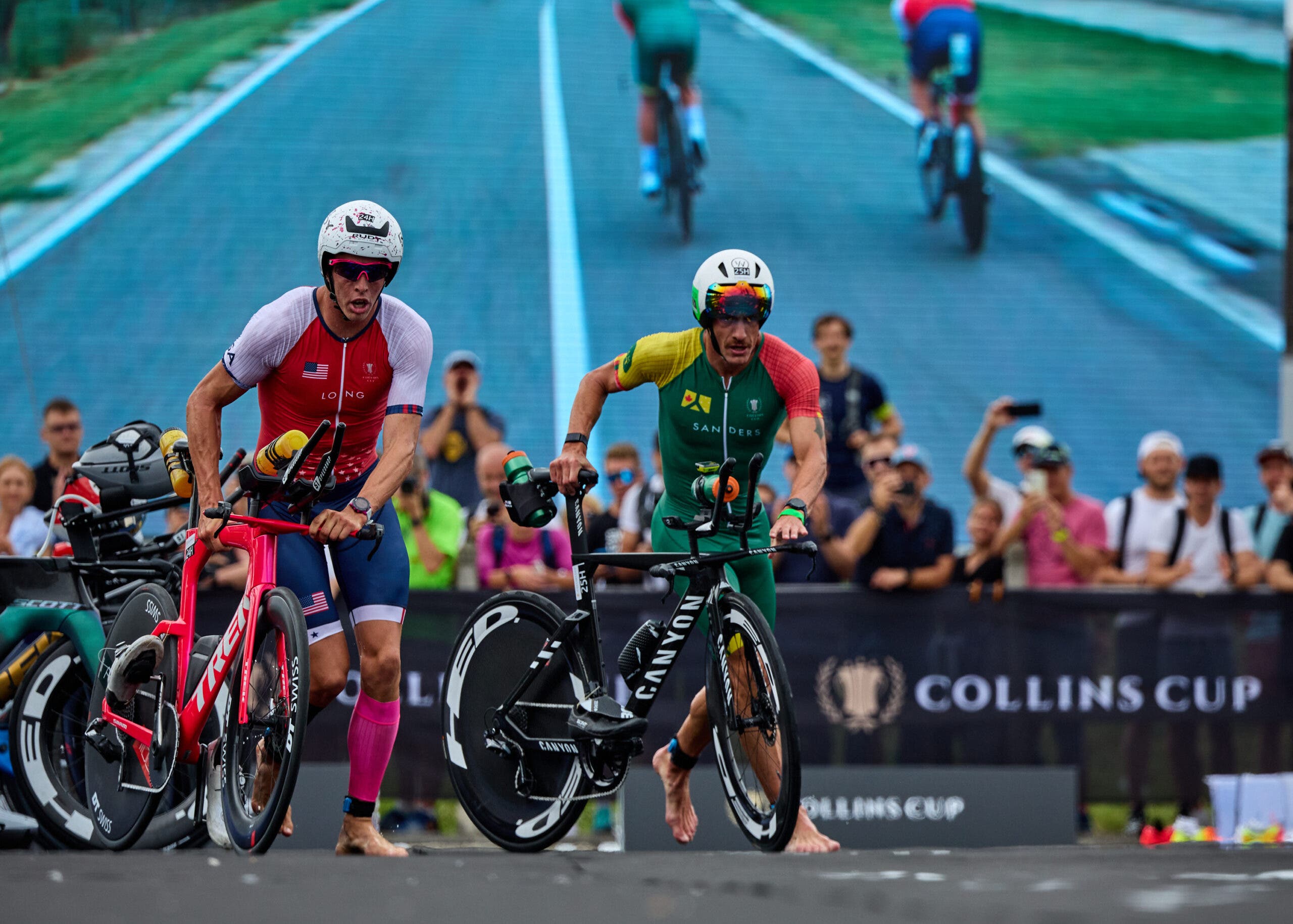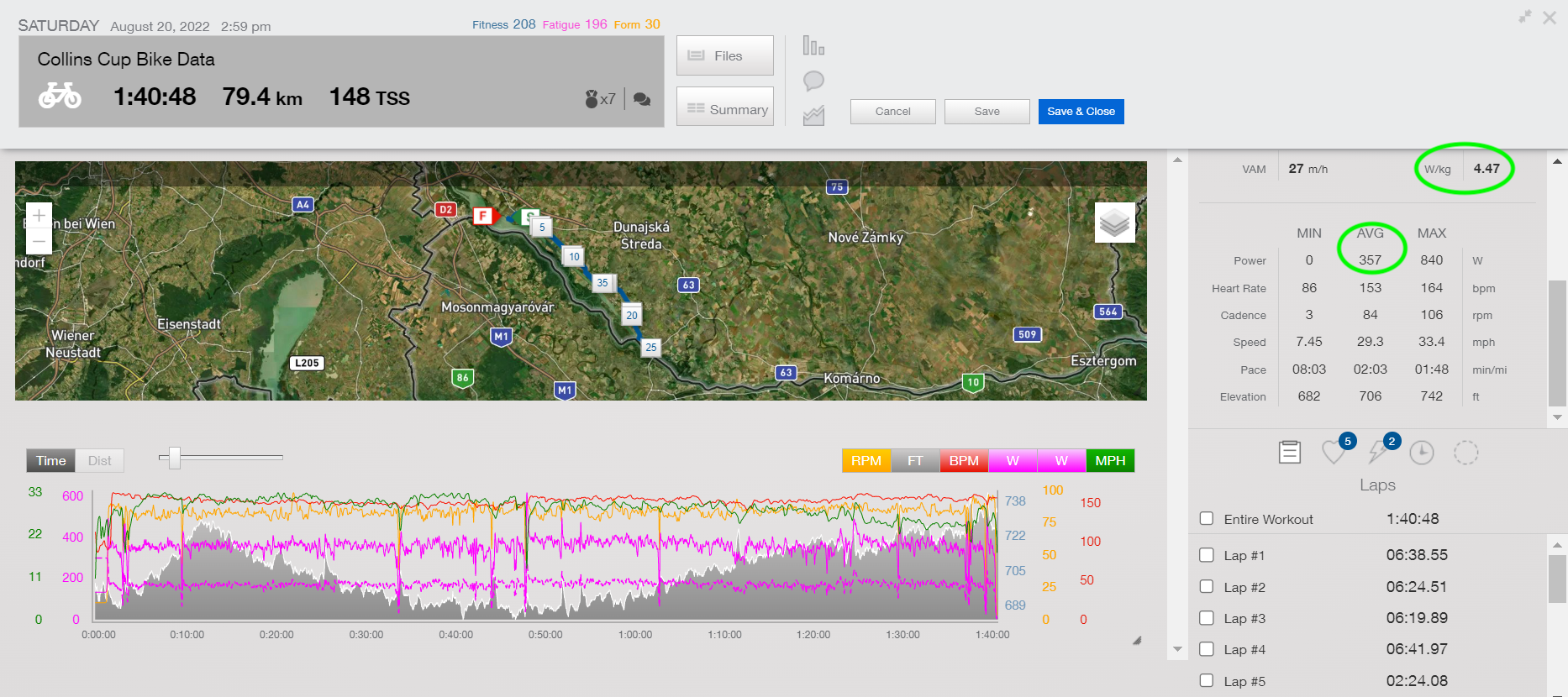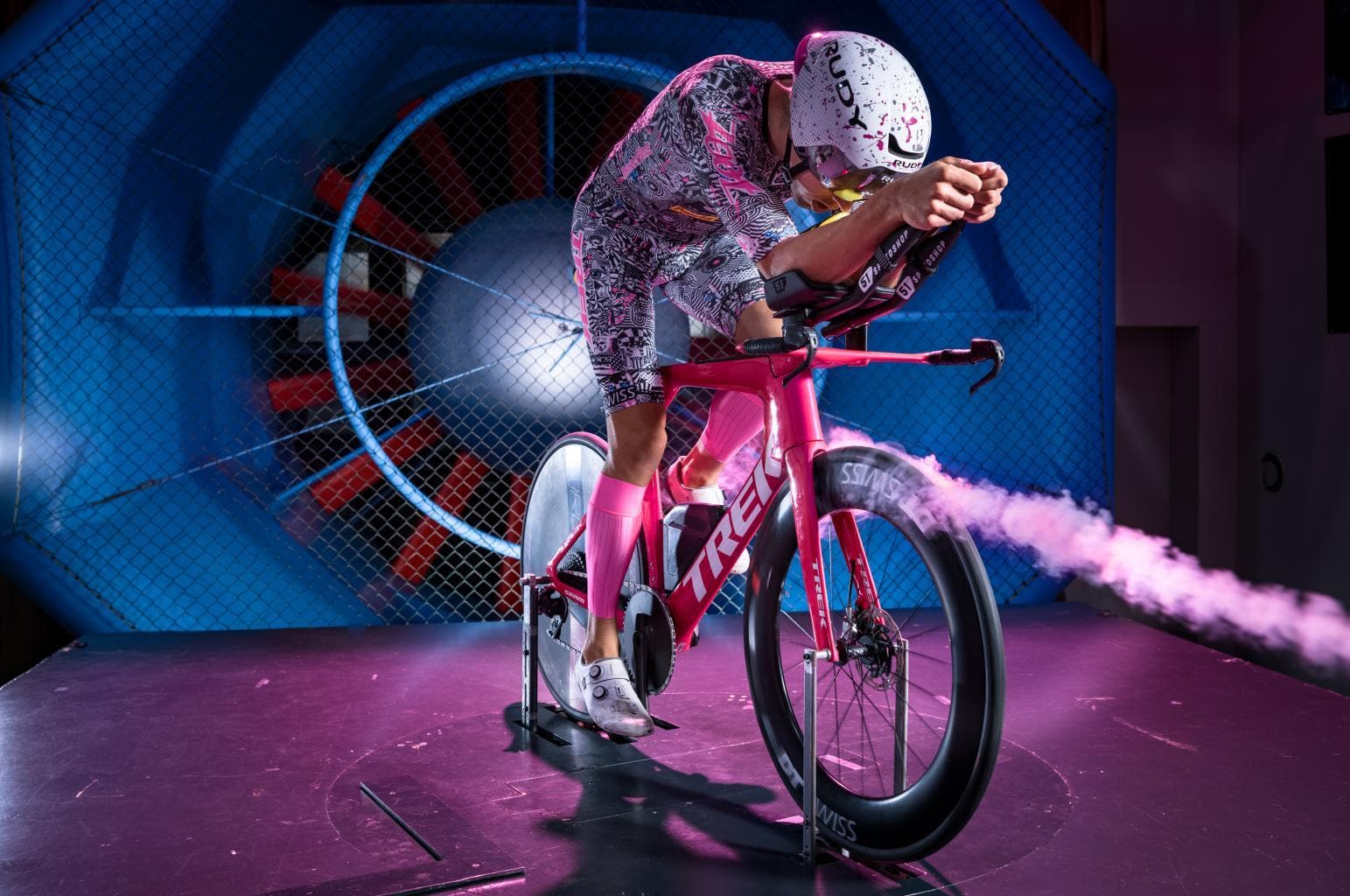A Close Look At Sam Long’s Collins Cup Bike Power File

(Photo: Professional Triathletes Organization, Sam Long)
On August 20, 36 of the world’s top long-course triathletes in the world converged on Bratislava, Slovakia, for the Collins Cup. Matched up in groups of three, based on national affiliation, triathletes went head-to-head-to-head to earn points for their team. One of the most anticipated matchups of the day also proved to be the most exciting, by far—the matchup of Sam Laidlow, Sam Long, and Lionel Sanders.
Though Laidlow exited the water with a big lead, both Sanders and Long rode together for most of the bike leg. The two crossed the line within seconds of each other, with Sanders taking the win and Long coming shortly behind. Their times ended up being the third and fourth fastest overall times of the day, respectively, and Long not only rode the fastest of anyone, but also the fastest in Collins Cup history with a 1:41:13 over the 80K distance (averaging 29.5 mph).

Soon after his stunning ride, we got a rare opportunity to catch up with Long and his coach, Olympian Ryan Bolton, to analyze Long’s bike power file and get the inside scoop on his race.
Inside Sam Long’s Collins Cup Power Files

“I think the overarching theme is that the numbers weren’t anything out of the ordinary, or extraordinary for me, they were pretty in the normal, ballpark for me,” Long said, of his 357-watt average (4.47 W/kg). “As far as how I actually felt on the day, I didn’t feel totally amazing.”
Long had been in an extended tour of Europe in the month previous, where he did have a great race at 70.3 Poland—taking the win in 3:37:55, with a bike split of 2:01:06. Long admitted that for the Poland race, he was more rested, but for the Collins Cup, he was actually in the midst of a training block, with a focus on 70.3 World Championships in St. George in October.
“So like a week [before Collins Cup], I did a 20-mile run, and then like three days after that I did like a 12-mile track workout,” he said of his lead-up. “So I think I was definitely feeling the run legs immediately on the bike. It also really meant I was kind of struggling the whole time—which was why I was still happy to be able to push those watts.“
That said, Long actually had no idea how hard he was riding.
“I’ve actually stopped racing with a bike computer. So I take it off, but I still wear my watch to record power,” Long said, instead riding on feel. “It allows me also to focus more on, ‘What am I doing with my aerodynamics? What am I doing with the road? What am I doing with the competition?’”
“A big thing was, ‘Don’t look at your power,’” added Bolton, who has coached Long since 2018. “I said, ‘well, ride hard, get on the bike and push it.’ I think Sam instantly got on the bike and like, went to the front and just locked into his pace.”
RELATED: What Wins World Championships: Racing By Data or Racing By Feel?
Despite having no computer or way to gauge his pace, Long still turned in a very smart and even ride—the way any coach would tell any age-group athlete to ride. “Sam’s power for the first half of the race was 354 watts,” Bolton said. “And his power for the second half of the race was 368 watts. So he actually rode 11 watts higher in the second half of the race. And really, the last 20 minutes were almost his heaviest 20 minutes.”
Why were those 20 minutes the most intense? Competition, of course.
“I told Sam, if you catch Laidlow on on the bike, it’s gonna just absolutely destroy that guy.” Bolton said. “Before the race, it sounded like [Laidlow] was just going to run away with this thing, but when [Sanders and Long] went by, they spiked the power a little bit to kind of twist the knife in a way.”

And yet, when looking at Long’s VI, or Variability Index—the ratio of normalized power to average power—the fact that his value is extremely close to one, means that he paced the ride very very evenly, with few spikes, bursts, or valleys in power. “It was really smart riding. His VI was 1.01, which is just incredibly even, constant pressure on the pedals,” Bolton said. “And just tucked into the aero position the entire way.”
Historically, Long said he’s struggled with flat courses, holding his aero position for a long time, but it’s something he’s been working on.
“Like, if we go back like a year, I used to actually get somewhat significant back problems on totally flat courses. So I’d have a hard time holding the position,” Long said. “This offseason we really buckled down on developing core so that I can stay in that position. And this was the first time ever, where I didn’t really feel any desire to come out of the position.” Furthermore Long had recently spent time in the wind tunnel in Europe, and leaned a few things about how to get the most power without any aero penalty.

“We found that as I went farther out [from the seat to the bars], not only did it get more aerodynamic, but it was actually proven to be more comfortable for me. Usually when you go to the wind tunnel, you do some of that crazy stuff to go lower, and you find five watts, but you can barely hold it for five minutes. So it was quite nice to find that, ‘Okay, we’ve got like five watts here,’ and it was actually feeling more comfortable.”
Between the wind tunnel, a great race in Poland, and a great ride at the Collins Cup, Long and his coach both agreed that their European campaign was an overall success. “He did this very specific camp in Europe, which could have been disruptive, and in some ways was because it was a foreign environment for him, but with everything, he ended up showing up well at Collins Cup,” Bolton said. “Just the fact that he was able to go to Europe, and kind of live that life and be on the road and travel around and be in foreign environments, still get in solid training, and then posting good numbers is a great sign.”
RELATED: Ask a Gear Guru: What Are the Best Power Meters for Triathletes?